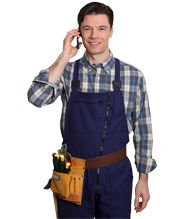Signs your sliding door needs repair
One of the first signs that your sliding door needs repair is difficulty sliding. If you find yourself exerting extra effort or dealing with a door that stubbornly sticks on its track, it indicates that there could be an underlying issue requiring attention. Another tell-tale repair sign is experiencing strange noises, such as grinding, squeaking, or scraping when opening or closing the door. These sounds generally address internal problems, including misaligned tracks, worn-out rollers, or damaged bearings. Additionally, visible damage to components like cracked glass, deteriorating seals, or bent tracks shouldn’t be overlooked, as they can exacerbate the door’s functional issues over time.
Addressing these common problems promptly can prevent further deterioration and costly damage. Ignoring these repair signs can lead to more serious issues like compromised door security and energy inefficiency due to gaps allowing drafts. Prompt sliding door repair ensures that wear and tear is managed before it escalates, maintaining the door's longevity and smooth operation. Not only does this proactive approach extend the life of your sliding door, but it also enhances your home's overall safety and functionality.
When replacement is the best option
While repairs can address many issues with your sliding door, there are situations where sliding door replacement becomes the most cost-effective or necessary option. If your door has sustained serious damage, such as severe structural impairment or irreparable cracks in the glass, continuing to repair it might cost more in the long run. Structural damage often affects the entire door assembly and can compromise safety, making sliding door replacement the wiser choice. Additionally, outdated models that are no longer energy-efficient pose a significant concern, especially with rising heating and cooling costs. Modern sliding doors are designed with advanced materials and technologies that greatly improve energy efficiency, sealing the temperature inside your home while keeping outdoor elements at bay.
Another factor to consider is the aesthetic and functional value a new sliding door brings. Over time, materials and designs evolve, offering improved security features, better insulation, and smoother operation. Opting for a sliding door replacement can add to your home’s overall value, making it a practical upgrade and a long-term investment. The replacement benefits are numerous: enhanced durability, reduced maintenance issues, and a refreshed appearance that complements modern home designs. By switching to a new sliding door, you not only address the immediate issues caused by serious damage or inefficiency but also significantly boost your home’s comfort and security.
How to troubleshoot sliding door issues
When troubleshooting sliding door issues, addressing minor problems early can save you time and money. One common issue is dirty tracks, which can hinder the smooth operation of your sliding door. Remove debris, dirt, or small objects from the door tracks using a vacuum or a soft brush. This simple DIY fix often resolves minor sliding difficulties. Next, focus on the rollers, which could be misaligned or worn out. Check if the rollers are running smoothly on the tracks; you might need to make some adjustments. Use a screwdriver to slightly adjust the height of the rollers to ensure they track properly and evenly. Regularly inspecting and adjusting the rollers can maintain your sliding door's functionality and prevent further wear.
Lubrication is another key aspect of troubleshooting sliding door issues. Over time, lack of lubrication can cause your sliding door to stick, squeak, or grind as it moves along the track. Apply a high-quality silicone-based lubricant to the door tracks and rollers, being careful not to use oil-based lubricants that can attract dirt and grime. These simple DIY fix steps can minimize minor issues and enhance the smoothness of your door's operation. Keeping your sliding door well-maintained with these basic troubleshooting techniques can prevent more serious problems and extend the life of your door, ensuring it remains a functional and aesthetically pleasing component of your home.
Choosing the right professional for repairs or replacement
When looking for a sliding door repair or replacement professional, it's vital to find someone with extensive experience, a good reputation, and proper credentials. Look for certifications positive customer reviews, and ask for references. Inquire about warranties, ask detailed questions about the process, and verify their licensing and insurance. These steps will help you find a trustworthy, skilled contractor for your sliding door repair or replacement needs.


